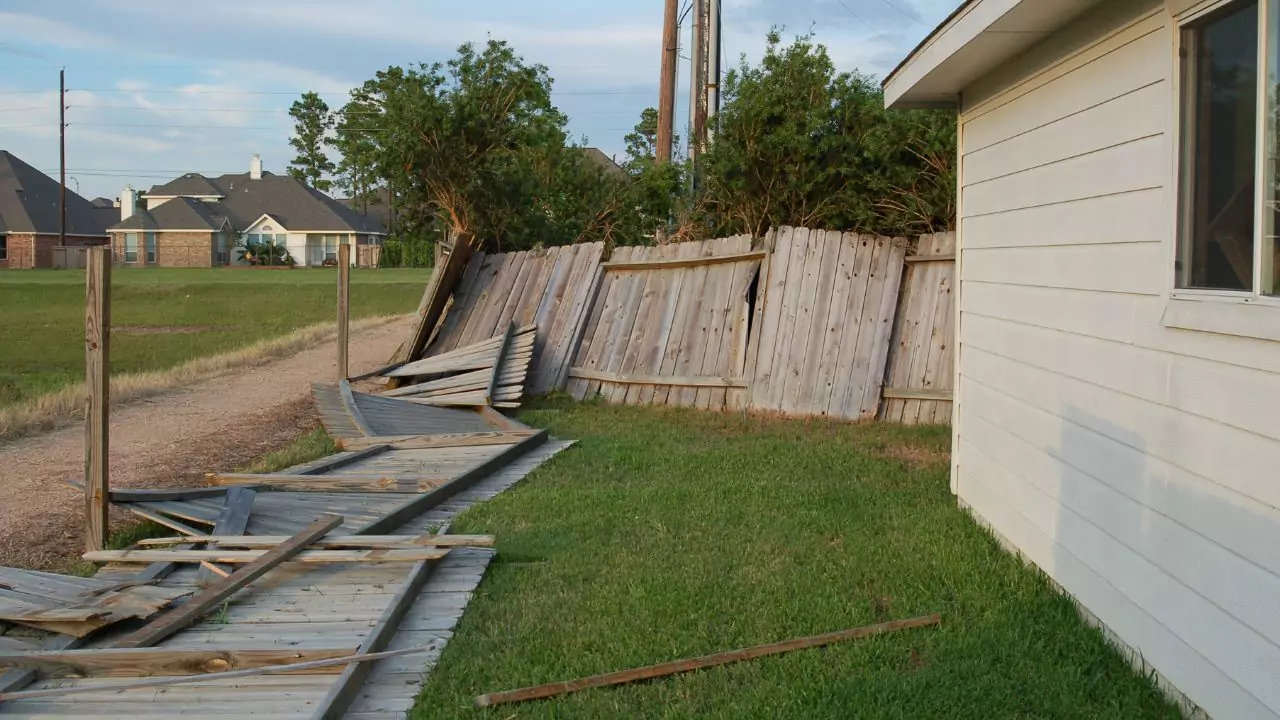Yes, homeowners insurance typically covers storm damage to fences, but with some important caveats. The extent of coverage is up to the limit specified in your policy. The damage to your fence is considered under additional structure coverage, and it falls within the scope of protection against various weather-related events.
Understanding Homeowners Insurance Coverage for Fences
What is Typically Covered?
- Storm-related damage: Windstorms, hailstorms, and lightning often fall under “covered perils” within your policy, meaning house insurance can kick in for repairs or replacements.
- Damage from fallen trees: If a healthy tree on your property succumbs to the storm and crushes your fence, it’s likely covered. However, if the tree was diseased or poorly maintained, your claim might be denied.
- Accidental damage: If a car veers off the road and crashes into your fence during a storm, your policy might cover it under collision coverage.
Factors that May Affect Coverage
- Policy exclusions: Some policies exclude wind coverage altogether, particularly in high-risk areas prone to hurricanes or tornadoes. Double-check your policy details for specifics.
- Deductible: Prepare to pay your deductible before insurance kicks in. The amount varies depending on your policy and the extent of damage.
- Fence age and condition: Older fences with pre-existing wear and tear might need to be fully covered. Regular maintenance demonstrates care and potentially increases your claim success.
Common Causes of Fence Damage
Storms and Severe Weather
Wind gusts, hailstorms, and even lightning can topple fences, blow sections loose, or smash panels. Most house insurance policies offer coverage for such storm-related damage.
Fallen Trees and Branches
Trees weakened by heavy winds or lightning strikes can crash onto fences, causing significant damage. Coverage depends on the tree’s condition and location – your own healthy tree falling is typically covered, while a neighbor’s diseased tree might require filing a claim against their insurance.
Accidental Damage
Cars, lawnmowers, or even mischievous animals can all unintentionally damage your fence. Depending on the cause and your specific policy, you might be able to claim coverage under collision or comprehensive coverage for vehicles, or vandalism coverage for intentional acts.
Steps to Take After Fence Damage
Assessing the Damage
Take photos and videos of the damage, focusing on close-ups and wider shots that show the overall impact. Note any safety hazards created by the damaged fence.
Documenting the Damage
Contact your insurance company promptly and report the damage. Provide them with photos, videos, and any relevant details about the storm or cause of damage.
Filing a Claim
Your insurance company will likely send an adjuster to assess the damage and determine coverage eligibility. Cooperate with their investigation and provide any requested information.
Tips for Protecting Your Fence and Preventing Damage
- Regular maintenance: Inspect your fence regularly, replacing loose screws, repairing minor cracks, and addressing any signs of rot or warping. Proper maintenance shows you care for your fence, potentially strengthening your claim case in case of damage.
- Proper installation: Ensure your fence is installed securely, using appropriate anchors and foundations for the type of fence and your region’s wind load. A sturdy construction can withstand storms better.
- Consider adding fence coverage to your policy: Some insurance companies offer optional add-ons specifically for fences. This might be worth considering if you live in a storm-prone area or have a particularly valuable fence.
Remember, understanding your homeowner’s policy and taking proactive steps to protect your fence can save you time, money, and stress in the event of storm damage. By following these tips and staying informed, you can ensure your fencing is not only a physical barrier but also financially protected against the fury of the elements.





